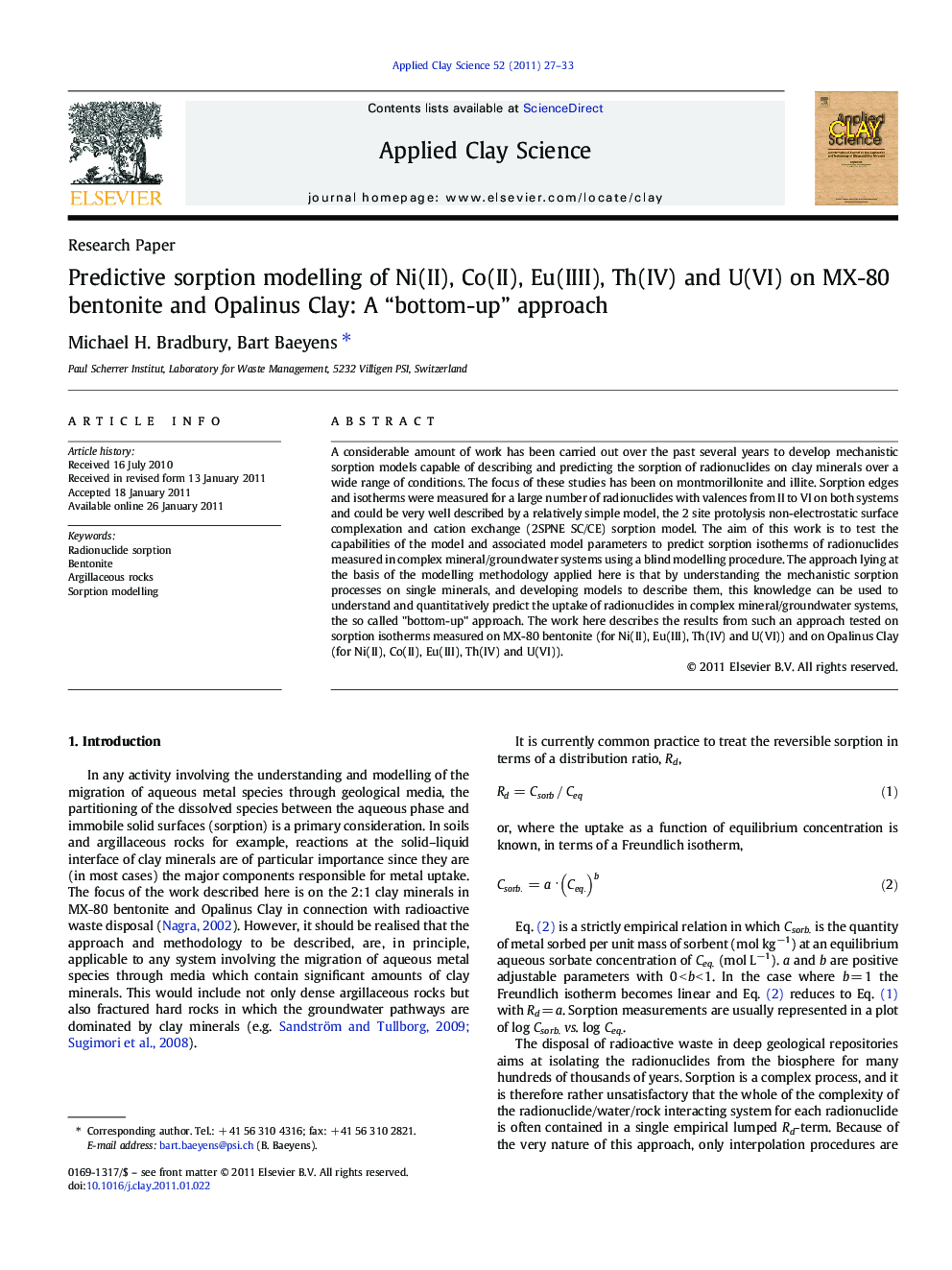| Article ID | Journal | Published Year | Pages | File Type |
|---|---|---|---|---|
| 1695469 | Applied Clay Science | 2011 | 7 Pages |
A considerable amount of work has been carried out over the past several years to develop mechanistic sorption models capable of describing and predicting the sorption of radionuclides on clay minerals over a wide range of conditions. The focus of these studies has been on montmorillonite and illite. Sorption edges and isotherms were measured for a large number of radionuclides with valences from II to VI on both systems and could be very well described by a relatively simple model, the 2 site protolysis non-electrostatic surface complexation and cation exchange (2SPNE SC/CE) sorption model. The aim of this work is to test the capabilities of the model and associated model parameters to predict sorption isotherms of radionuclides measured in complex mineral/groundwater systems using a blind modelling procedure. The approach lying at the basis of the modelling methodology applied here is that by understanding the mechanistic sorption processes on single minerals, and developing models to describe them, this knowledge can be used to understand and quantitatively predict the uptake of radionuclides in complex mineral/groundwater systems, the so called "bottom-up" approach. The work here describes the results from such an approach tested on sorption isotherms measured on MX-80 bentonite (for Ni(II), Eu(III), Th(IV) and U(VI)) and on Opalinus Clay (for Ni(II), Co(II), Eu(III), Th(IV) and U(VI)).
Research Highlights► Modelling sorption of radionuclides on natural systems in complex water chemistries. ► Application of a surface complexation model on montmorillonite to bentonite. ► Application of a surface complexation model on illite to argillaceous rocks.
